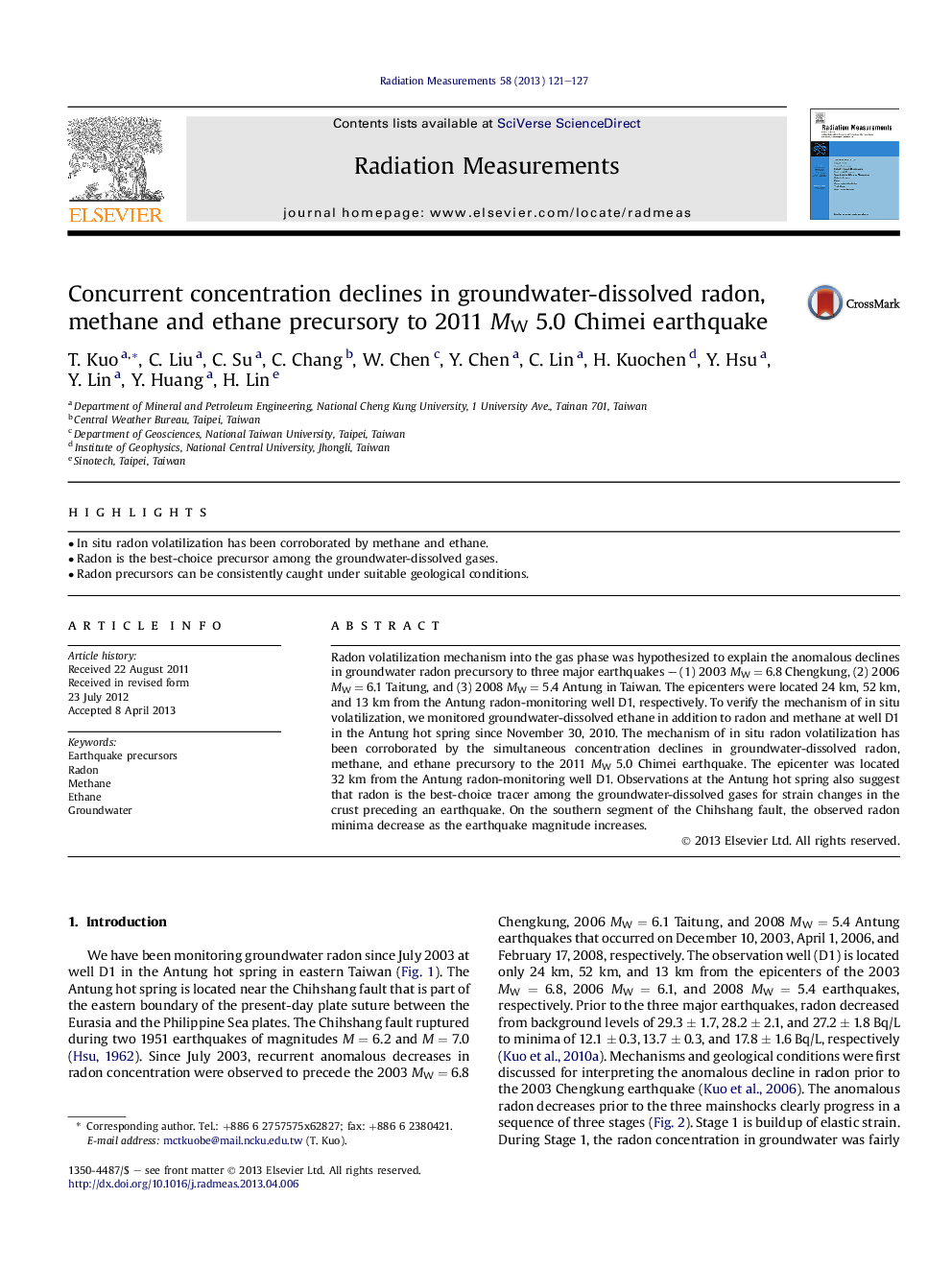| Article ID | Journal | Published Year | Pages | File Type |
|---|---|---|---|---|
| 1884995 | Radiation Measurements | 2013 | 7 Pages |
•In situ radon volatilization has been corroborated by methane and ethane.•Radon is the best-choice precursor among the groundwater-dissolved gases.•Radon precursors can be consistently caught under suitable geological conditions.
Radon volatilization mechanism into the gas phase was hypothesized to explain the anomalous declines in groundwater radon precursory to three major earthquakes – (1) 2003 MW = 6.8 Chengkung, (2) 2006 MW = 6.1 Taitung, and (3) 2008 MW = 5.4 Antung in Taiwan. The epicenters were located 24 km, 52 km, and 13 km from the Antung radon-monitoring well D1, respectively. To verify the mechanism of in situ volatilization, we monitored groundwater-dissolved ethane in addition to radon and methane at well D1 in the Antung hot spring since November 30, 2010. The mechanism of in situ radon volatilization has been corroborated by the simultaneous concentration declines in groundwater-dissolved radon, methane, and ethane precursory to the 2011 MW 5.0 Chimei earthquake. The epicenter was located 32 km from the Antung radon-monitoring well D1. Observations at the Antung hot spring also suggest that radon is the best-choice tracer among the groundwater-dissolved gases for strain changes in the crust preceding an earthquake. On the southern segment of the Chihshang fault, the observed radon minima decrease as the earthquake magnitude increases.
